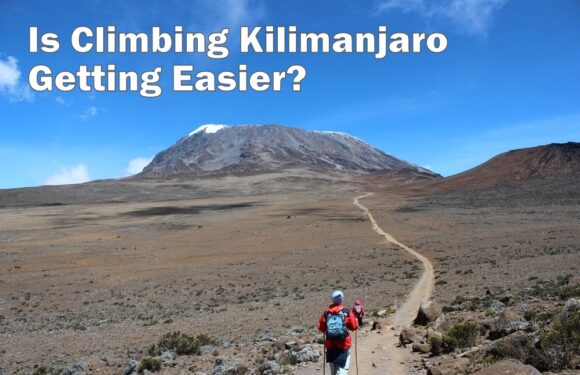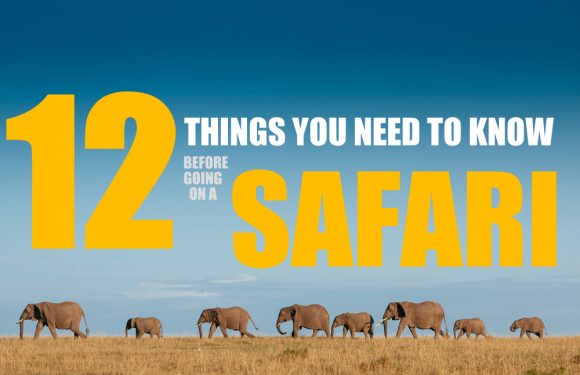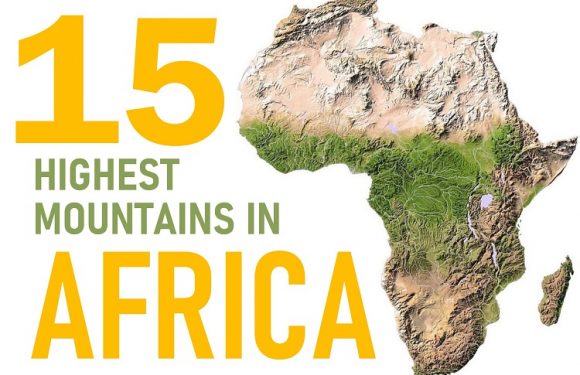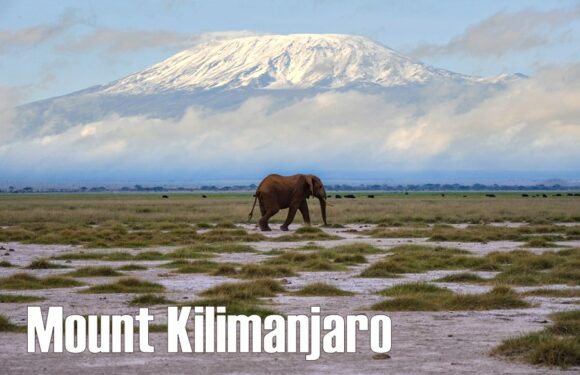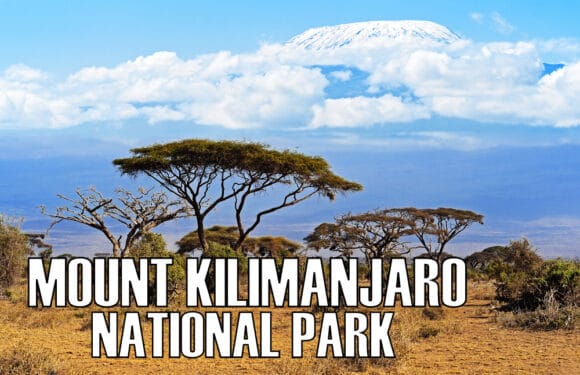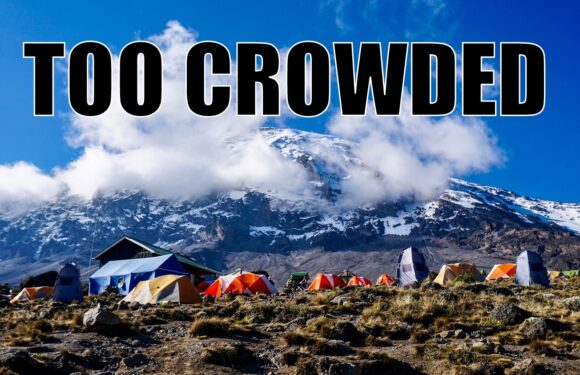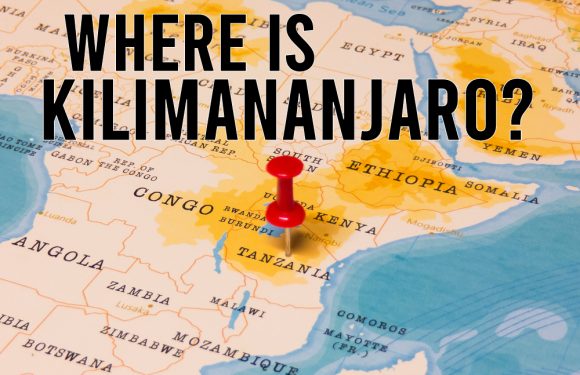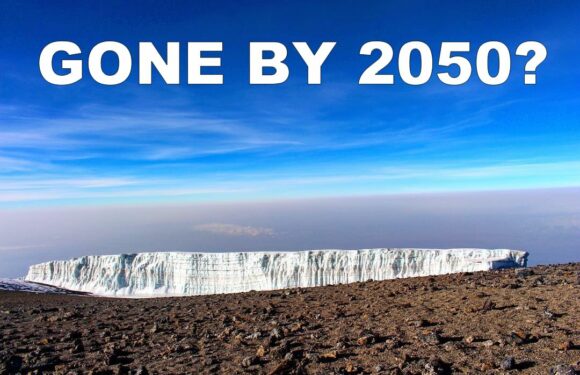Mount Kilimanjaro, located in Tanzania, is the highest mountain in Africa and one of the most popular trekking destinations in the world. Every year, thousands of people attempt to reach its summit, Uhuru Peak, which stands at 19,341 feet (5,895 meters) above sea level. While the approach to high camp takes several days, the final ascent is typically done at night.
So, why is this?
There are several reasons why we climb Mount Kilimanjaro at night.
Favorable Trail Conditions
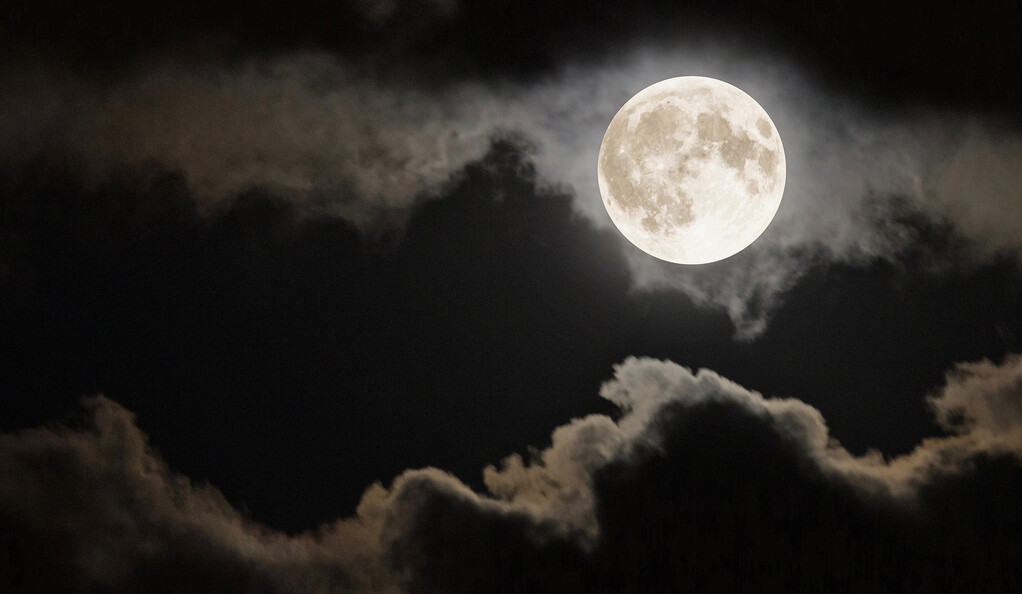
It’s standard practice in mountaineering to start the summit bid of most alpine peaks during the night. The main reason is that colder temperatures make for more favorable terrain.
Having a frosty atmosphere reduces the likelihood of avalanche or rockfall by holding things in place. For the same reason, cold temperatures make the ground more stable, which is especially important when walking with crampons on snow and ice. The sun can cause the snow and ice to melt, making the path more slippery and hazardous.
But what about Kilimanjaro?
It’s a peak that doesn’t normally require the use of crampons. However, the trail to the summit is comprised of volcanic rock, sand and scree. During the day, these elements are very loose and ascending on this terrain can burn a lot of energy. Climbing at night means that the surface is usually frozen, making it easier to traverse. Therefore, summiting at night requires less energy.
Better Time Management

The trail to the summit and back, plus the descent to the final campsite is long. That means you need time to complete it.
To reach the summit from high camp requires 6-8 hours. The subsequent descent to the last campsite usually takes 4-6 hours. That adds up to 10-14 hours on the trail, not including the long break we take upon returning to high camp.
There simply aren’t enough hours in the day to start and finish the hike in the daylight. Leaving for the summit in the middle of the night ensures that there is enough time to go the summit and make it down to camp before the sun sets. Typically, our clients leave for the summit at midnight and reach the last camp in the midafternoon.
In the event there’s an emergency, we would rather have more time and more daylight to bring you to safety.
Going down on the trail in the dark increases the chances of slips and falls, and it’s something we really want to avoid.
To See the Kilimanjaro Sunrise
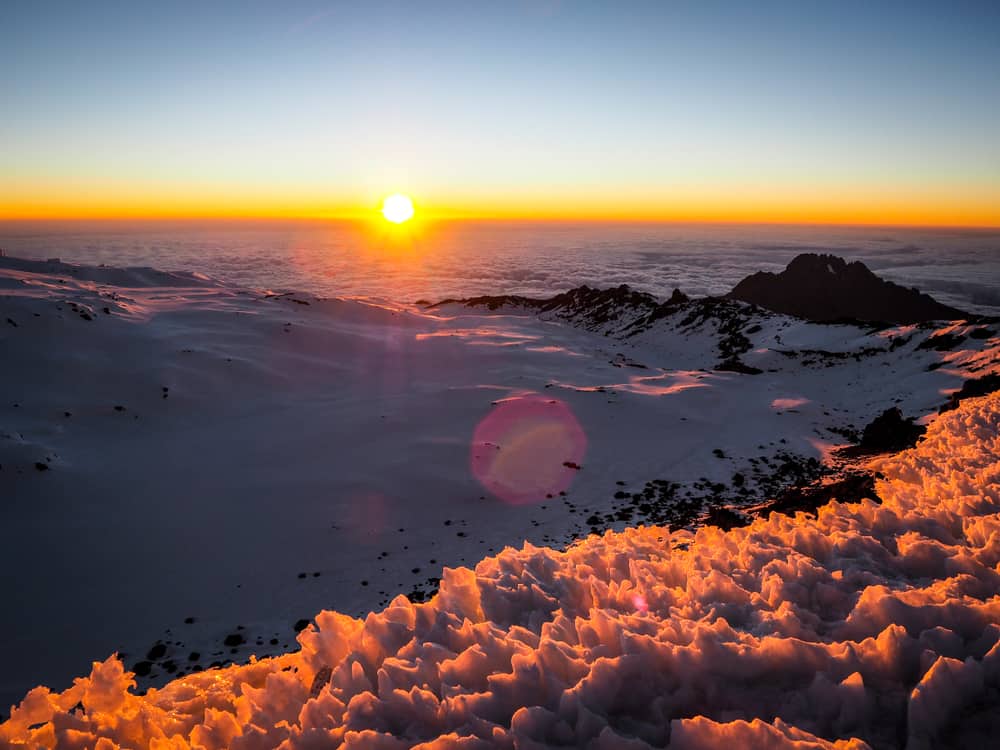
Our guides try to time their ascent so that the trekking party reaches the summit just after sunrise.
This is a truly special moment, as the first rays of the sun light up the sky and the surrounding landscape, creating a breathtaking panorama. It’s a magical and unforgettable experience that many climbers cherish for years to come. This particular event is what many people talk about when recounting their experience on the mountain.
The visibility on Mount Kilimanjaro is usually excellent in the early morning.
So by being on the summit at this time, the chances for a clear, expansive view are very high.
Why Descend So Far After Summiting?
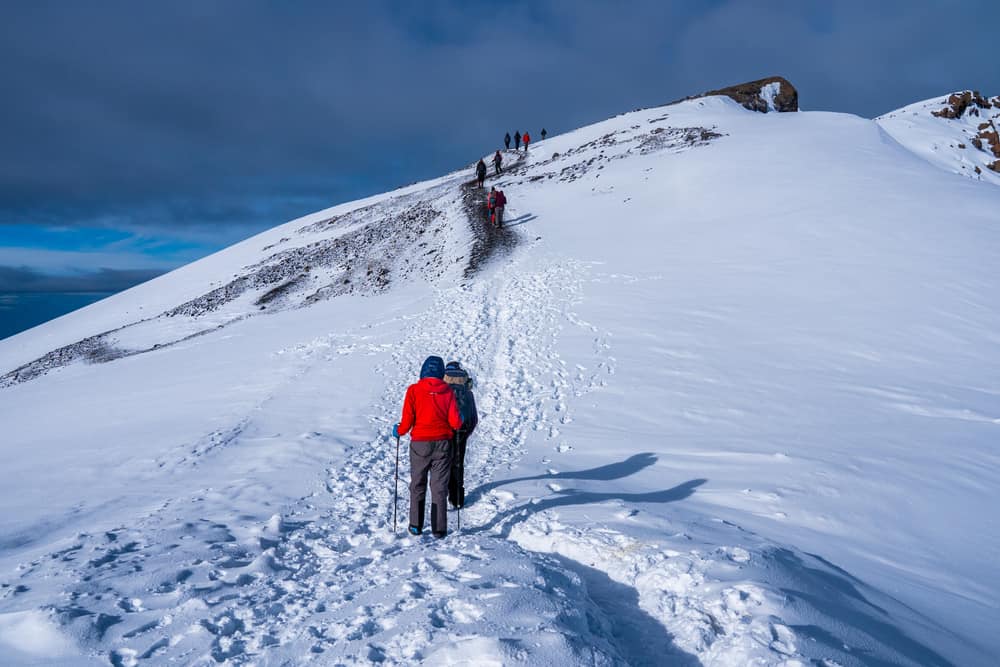
Some people ask us why we summit and descend halfway down the mountain on the same day, rather than simply summiting and returning to high camp. If we did this, we could start and complete the hike during daylight hours. It’s a valid question.
The answer is threefold.
Low Altitude Helps Recovery
Kilimanjaro’s high camps have an elevation of around 15,000 ft. At this altitude, sleeping and recovering is very difficult. Furthermore, staying for another night at 15,000 feet may cause a person’s condition to deteriorate, whether from sleep deprivation, fatigue, dehydration, or altitude sickness.
After summiting, we want to get people as low as possible. By putting climbers in a relatively oxygen rich environment at 10,000 feet, those with symptoms of altitude sickness often will recover completely. Even those who have acclimatized well will feel much better.
No Water Sources on Upper Slopes

There are several springs and streams on Mount Kilimanjaro that provide water year-round. But these water sources are situated on the lower and middle slopes of the mountain. There are no water sources on the upper slopes. All of the water that is used by our staff and clients at high camp are hauled from lower elevations. Staying for an extra night would require more water and accordingly, much more manpower to fetch that water.
Limited Space at Campsites
The third reason why we don’t stay at high camp after summiting is due to logistics.
There are seven primary routes. These routes and their climbers converge in a few campsites and as a result, space is limited. In order to make room for the people who are about to make their summit bid, those who already summited must vacate the site.
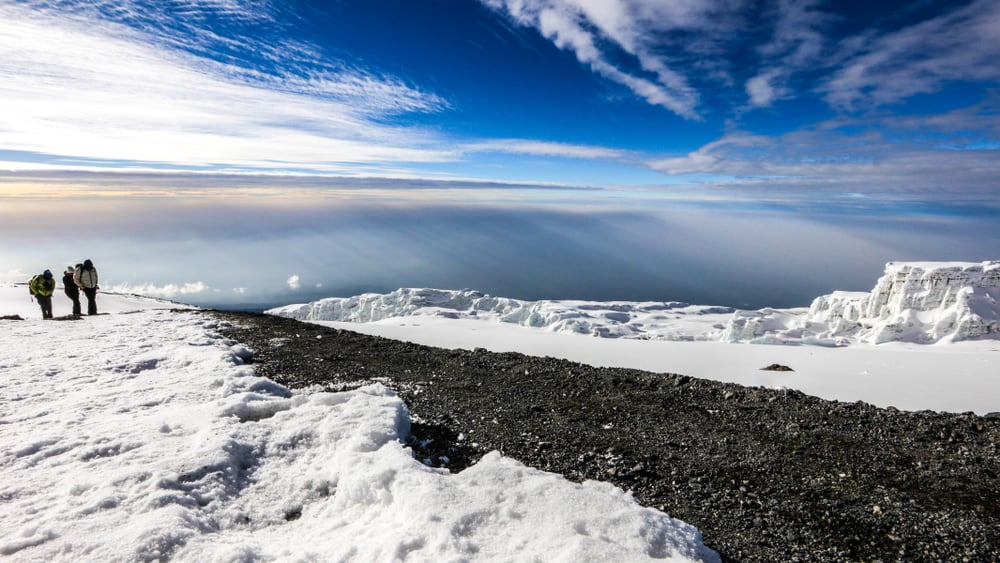
Conclusion
Climbing Kilimanjaro at night offers several advantages, including better trail conditions, higher margins of safety, and more spectacular views. We realize that a night ascent can be challenging, due to the darkness, the cold and the wind. But the pros definitely outweigh the cons.
So, while it might not sound so enjoyable to climb Kilimanjaro in the middle of the night, know that there are compelling reasons behind why we do it and it is with your best interest at heart.




















































